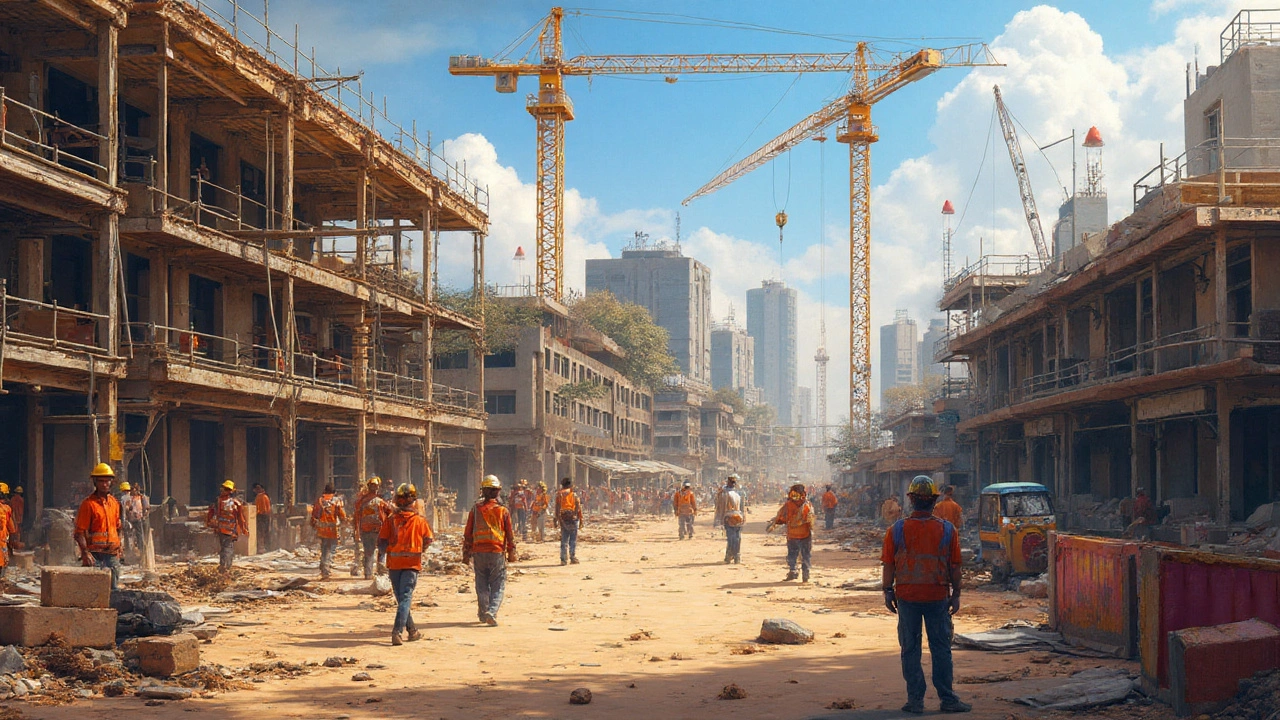Steel Frame: What It Is, How It’s Used, and Why It Matters in Modern Construction
When you see a tall office building, a warehouse, or a big-box retail store, what you’re really seeing is a steel frame, a structural system made of steel beams and columns that supports the entire weight of a building. Also known as steel skeleton construction, it’s the most common way to build large structures today because it’s strong, fast to assemble, and flexible in design. Unlike wood or concrete, steel doesn’t warp, rot, or crack under pressure. It handles heavy loads and spans long distances without needing thick support walls—making it perfect for open floor plans and multi-story buildings.
Steel frame construction is closely tied to commercial construction, the process of building structures for business use, like offices, stores, and factories. Most of the posts on this site focus on commercial projects because that’s where steel frames dominate. You’ll find articles explaining how steel compares to concrete in construction types, the classification system used in building codes to define fire resistance and material use, and why Type C construction often relies on structural steel. It’s also the go-to choice for pre-engineered metal buildings, tilt-up structures, and industrial facilities where speed and durability matter more than aesthetics.
But steel isn’t just for big projects. Even in residential builds, you’ll see steel frames used for additions, garages, or homes in areas with high wind or seismic risk. The material’s consistency means fewer surprises during construction—no shrinkage, no settling cracks, no surprises from wet weather. And because it’s manufactured to exact specs, it reduces waste and speeds up the build timeline. That’s why contractors and developers choose it: it saves time, cuts labor costs, and gives more predictable outcomes.
One thing to watch: steel needs protection from rust. That’s why coatings, galvanization, and proper drainage are part of every steel frame project. It’s not just about putting up beams—it’s about planning for moisture, insulation, and fire ratings. The posts here cover those details, from how steel interacts with drywall and insulation to how it fits into building codes like the IBC. You’ll also find comparisons between steel and other materials, cost breakdowns for steel-framed buildings, and real-world examples of where it shines—and where it doesn’t.
Whether you’re a homeowner thinking about a steel-framed garage, a contractor bidding on a commercial job, or just curious about how buildings stay standing, this collection gives you the facts without the fluff. You’ll see what works, what doesn’t, and why steel keeps winning in construction.
Top Methods of Commercial Construction Explained for Modern Businesses
Explore the main methods of commercial construction, from steel frame to modular builds. Learn how businesses choose the best techniques and why it matters.
Learn more...